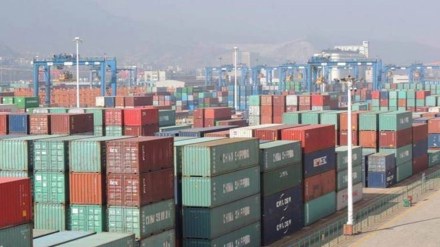By Vijay Singh Chauhan & Nikita Singla
As done every year since 2019, India conducts another round of annual assessment to measure release time for exports and imports (EXIM), moving through 15 major ports in the country, in the first week of calendar year.
As the world stares at plausible recession, India is striving to ensure export buoyancy to sustain its economic growth above the trend rate. Notwithstanding India’s small share in the world trade, in today’s globalised world, the fear of contagion spreading to India merits effective policy response. Towards this objective, Indian Government is pursuing a multi-pronged approach – focusing on free trade agreements and expeditious completion of trade-related infrastructure, including the dedicated freight corridor, “Sagarmala” projects and multimodal parks, besides providing enhanced trade facilitative environment.
High trade costs for the EXIM business have been identified as a major bottleneck to international trade, perhaps more so for India and other developing countries. Pursuant to the coming in force of the Trade Facilitation Agreement (TFA) under the aegis of the World Trade Organization, India has fulfilled all its commitments to ensure trade facilitation. In fact, it has gone beyond the TFA in drawing up a more comprehensive time-bound ‘National Trade Facilitation Action Plan’ that also includes augmentation of physical and IT infrastructure.
Perhaps believing in the philosophy, “what gets measured, gets done”, one of the TFA provisions requires regular measurement of trade time, broadly approximated by the average time taken in clearance of export and import consignments. Indian Customs has been at the forefront of using this performance measurement tool, commonly known as the Time Release Study (TRS) for self-assessment and evidence-based policy making, relying on unimpeachable digital timestamps from the customs automated system and supporting IT systems of other stakeholders.
The annual TRS was pioneered at the Jawaharlal Nehru Customs House, the largest Custom House in 2017, focussing initially on imports. It has shown a consistent improvement in import release time from 181 hours in 2017 to 88 hours in 2022, which becomes even more impressive when compared with about 14 days that it took to clear an import consignment in 2010, as per a report by Comptroller and Auditor General of India.
Over the years, India has progressed to conducting a National TRS since 2019 that covers 15 major customs ports in the country, including all the four modes of trade, namely seaport, dry port (inland container depot), airport and land ports. These ports accounts for about 75 percent of the EXIM trade of the country. The ongoing National TRS 2023 study is 4th annual national-level study since 2019 (excluding 2020 because of the pandemic) and covers the export and import documents filed during the first week of the calendar year.
Recognising that the cargo release time depends on a variety of factors, including the mode of cargo movement, National Trade Facilitation Action Plan 2020-23 aims to bring down the import release time to 48 hours for Sea Cargo, Inland Container Depots and Land Customs Stations and 24 hours for Air Cargo and export release time to 24 hours for Sea Cargo, Inland Container Depots and Land Customs Stations and 12 hours for Air Cargo.
The National TRS 2022 had affirmed the direction of the trade facilitative initiatives, including the focus on “Path to Promptness” comprising pre-arrival processing, risk based facilitation, trust-based authorised economic operator programme and coordinated border management through Single Window scheme. The ongoing National TRS 2023 is seeking to explore more nuanced issues and gain deeper insights pertaining to challenges faced by trade that go beyond documentary clearance, particularly those relating to exports.
For instance, National TRS 2022 indicated that considerable time is taken after the grant of Customs clearance (called Let Export order) to the final departure of goods (vessel sail off or aircraft take-off), which is attributable to larger logistics issues. This is a key focus area of the 2023 study, to be studied through direct stakeholder engagements.
With National TRS 2023 underway, it is expected that continuous efforts towards trade facilitation, both at the policy level and administratively at the port level, can help India offer its trade community an environment that entails minimal time and cost and provides greater certainty regarding both.
Studies such as TRS are acknowledged to be effective tool for performance measurement and more importantly bring together various stakeholders to achieve common goal of higher and more efficient EXIM trade.
Vijay Singh Chauhan is Commissioner of Customs, Government of India and Nikita Singla is Associate Director at New Delhi-based Bureau of Research on Industry and Economic Fundamentals (BRIEF). Views expressed are personal.
